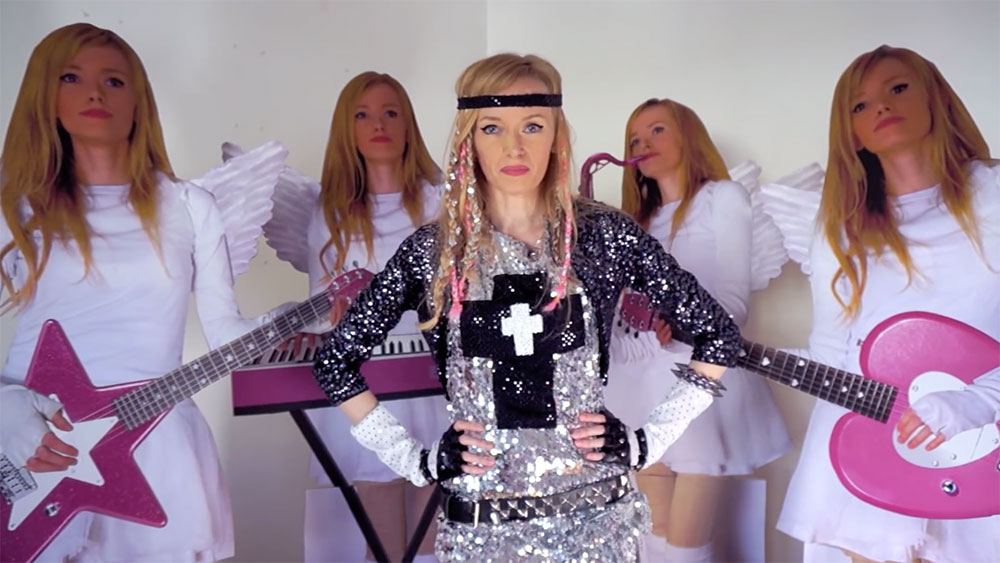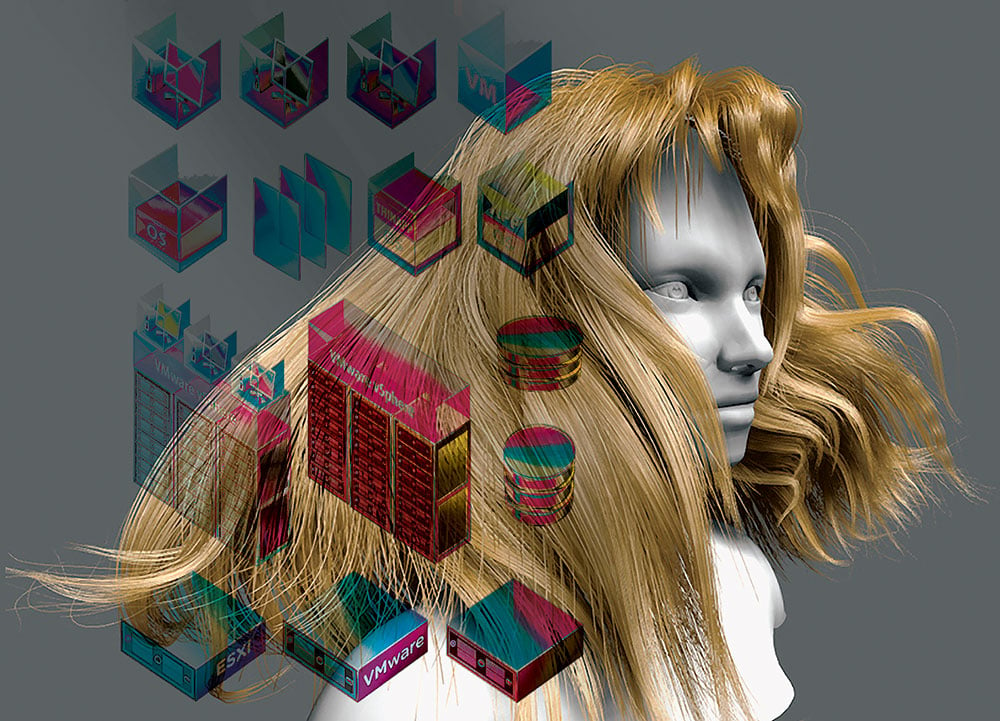It’s stock photography, webcam tutorials and Street View. It’s WordArt-text, Photoshop gradients and 3D effects. If it’s not criticised for being low-res, amateur and kitsch, its name is what people disagree with most. Not unlike the email address you regret making as a kid, the term post-internet has stuck around defiantly. Moreover, post-internet art has particular resonance in eastern Europe, where artists of the 1990s used the internet to go beyond the borders of their once closed countries. However as post-internet art from the new east reveals, the virtual world is not without national boundaries.
As former Eastern Bloc countries opened up their borders, artists also found an international platform for their work with the arrival of the internet
Despite what “post” may imply, the term doesn’t refer to art separate from the internet. On the contrary, this is art that’s textured by online-trawling — even somewhat nostalgic of the early web — and as a result, doesn’t immediately lend itself to a shared aesthetic or concept. The foundations of post-internet lie in the beginnings of the web, with its radical promise for a new, virtual space. This promise of a zone that transcended borders excited artists from the very beginning.
Aleksandra Domanović Turbo Sculpture, 2010-2013
“Internet is not computers, applications, scripts… It’s not a technology but a new world,” says a character in Russian artist Olia Lialina’s Agatha Appears. Created online in 1997, the work is an interactive narrative that unfolds over a linear sequence of web pages. Having studied film criticism, Lialina played with the tropes of a typical romance movie. A small town girl meets a system administrator who shows her a way to transport herself anywhere via the internet, and the viewer follows their dialogue through the status bar at the bottom of the screen. The work is representative of early internet art or net.art but it also reflects one of the founding myths of the internet as an emancipatory space.
The advent of the internet coincided with a period of major political changes in the East. As former Eastern Bloc countries opened up their borders, artists also found an international platform for their work with the arrival of the internet. More importantly, the internet provided a community at a time of disintegration for both the Soviet Union and Yugoslavia. Net.art emerged in the Nineties not only as a site-specific art form but as a network, and for this reason has been hailed as the first truly international movement. Lialina’s contemporaries were Russian artist Alexei Shulgin and Belgrade-born Vuk Ćosić, among others. Hungarian-American millionaire George Soros was one of the key figures responsible for setting up media centres such as Ljudmila in Ljubljana, Slovenia, making it possible for Eastern European artists to participate in the growing international digital community.
Artists stayed connected through mailing lists. Among lists such as Rhizome and Nettime, Syndicate — founded in 1996 — was focused on fostering exchange between the East and West. It included artist Vuk Ćosić, curators Inke Arns and Andreas Broeckmann amongst some of its original members. Meeting regularly offline at festivals and conferences, its participants soon became dedicated also to eradicating the dichotomy the real and virtual worlds. Deep Europe, the title of a workshop at Documenta X in Kassel in 1997, suggested a space that was neither East nor West specific. Rather than aspire to globalisation, Syndicate sought ways to preserve the local. As its member and moderator Andreas Broeckmann explained in an essay on Deep Europe: “Translocal means that you are dealing with individual local situations but they are distributed within a larger geographical and cultural system.” At another workshop in Helsinki in 1999, Syndicate envisioned the virtual state Balkania in response to the civil war ensuing in the territory of former Yugoslavia.
Caught up in the political tensions of the Kosovo war, the mailing list could no longer cope with increasingly aggressive rhetoric, unmoderated at the time, and eventually disintegrated. Net.art too had declined at the turn of the millennium spurred by a maturing of technologies, with social media replacing mailing lists as a preferred method of communication. A decade later, Ćosić, the co-founder of Syndicate, reflected: “Net.art is a bit like eastern Europe. There was lots of expectations, some of them were met, but in general we stopped being terribly attractive and scary somewhere around the dotcom boom.”
Humour has replaced the network as a way to connect people
How would Agatha Appears play out on the internet today? Hotel Love, by Russian photographer and filmmaker Nadia Bedzhanova, created nearly two decades after Lialina’s art work, is a digital love story of our time. The series was shot over the summer of 2015 during a month of back-to-back business trips, and documents an internet romance between Bedzhanova and a man with whom she doesn’t share a language. Instead of a click-through narrative we see the exchanges between Nadia and the object of her affections via Nadia’s selfies and iMessages, as translated by Google. Hotel Love shows the way that technology and its ability to transcend language barriers has changed our understanding of intimacy. What’s more, it illustrates the way in which the internet is no longer separate or separable from the world we live in now.
Skatka, State of Cloud (2014)
While the internet inspired eastern European net.artists of the Nineties to re-map the world, the post-internet artists of today look exploring the ways the internet has redefined everything from our relationships to our memories. Humour has replaced the network as a way to connect people — in fact this is the kind of humour that can only originate from the internet, whether it’s viral videos or memes. Aleksandra Domanović, for example, is interested in the post-Soviet phenomenon of commemorating Hollywood figures as monuments in ex-Yugoslavian republics. For her ongoing video work Turbo Sculpture she collects photos of monuments to Bruce Lee or Bob Marley she finds on the internet to make a kind-of slideshow presentation that looks at the peculiar ways culture is edited and encountered in both the physical space and online.
Born in Novi Sad in the former Yugoslavia, Domanović has made her country of origin central to many of her works. She continues the topic of national memory in the film .yu. The work presents an alternative history of Yugoslavia by tracing the trajectory of its domain name. The .yu domain was first registered in 1989. A year later, Yugoslavia became the first socialist country to join the internet. Yugoslavia collapsed before the domain was removed in 2010, when it was acquired by the Museum of Yugoslav History in Belgrade. Through interviews with the two female computer scientists, Domanović uncovers the way the virtual too is caught up in geopolitics.
While Domanović looks at the virtual afterlife of a country that no longer exists, Estonian collective Skatka — made up of artists Rainar Aasrand and Mikk Madisson — examine the way Estonia has rebranded its national identity with digital technology. Described as the home of Skype (which was co-founded by Jaan Tallinn), Estonia has gone beyond any other country in digital innovation by offering digital ID cards to its citizens and e-residencies to anyone else in the world. State of Cloud borrows the language of cloud computing and trend forecasts. Skatka have created a post-internet anthem for E-stonia by combining clips from Nineties pop, trash TV and YouTube, in order to examine the humorous side of Estonia’s pride in its digital identity.
Taking a broader view on the impact of digital phenomena on ecology, Estonian artist Katja Novitskova investigates the ways animals, reduced to memes and YouTube compilations, have come to dominate the internet, while in reality many exotic species are facing extinction. For her 2012 series Macro Expansion, Novitskova reversed the process by removing animal pictures from their original webpages and returning them to their three-dimensionality by constructing larger than life cut-outs. Finally, photographing the installations and uploading them online, she reconsiders the life cycle for the digital age. In her more recent work, Novitskova speculates about how our fascination with digital animals will go on to shape our futures even further: the influence it will have on everything from entertainment to weapons.
The idea of the internet as its own borderless world has remained an attractive one especially when we continue to use terms such as “digital immigrant” and “digital native”
It was recently announced that Novitskova will represent Estonia at the 57th Venice Biennale in 2017. Back in 2009 the Venice Biennale introduced the very first internet pavilion. The theme chosen that year was “Making Worlds” so it made sense to dedicate its own space among other participating countries. The idea of the internet as its own borderless world has remained an attractive one especially when we continue to use terms such as “digital immigrant” and “digital native” to signify people born before and after the dawn of internet and mobiles. Novitskova’s take over of the Estonian pavilion, like the overarching message behind much of her work, is a reminder of the inseparability of the internet from the contemporary world.
Text: Liza Premiyak

